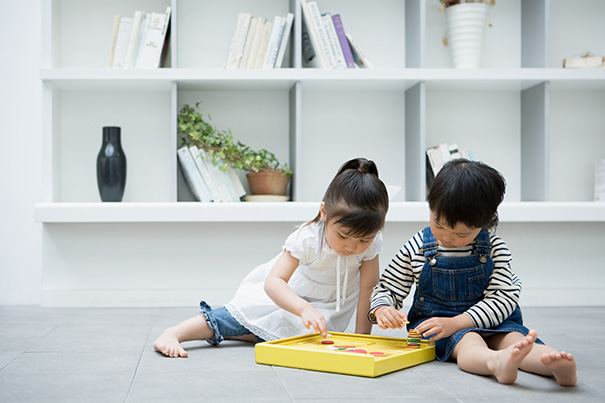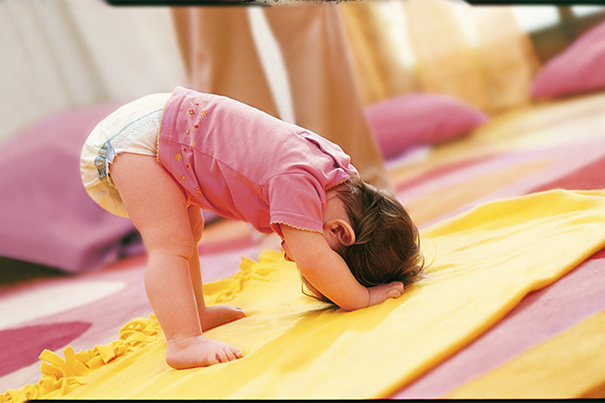
10 Tips for Dealing With the Terrible Twos
You may have expected it to happen sooner or later: the terrible twos – when your sweet and adorable toddler morphs into a defiant, tantrum-prone tornado. Find out what causes the terrible twos and how long this phase could last; and pick up some pointers on coping with the tantrums and defiant behaviour.
What Is the ‘Terrible Twos’?
This period in your toddler’s development may be known as the terrible twos, but in fact it often starts well before your child’s second birthday, at around the age of 18 months. As your baby becomes more and more independent – walking, learning to talk and pushing back on the boundaries of his or her world – your little one may also start to test the limits of what’s permitted. The resulting battles can lead to tantrums and defiant behaviour. The ‘symptoms’ of the terrible twos can seem to pop out of nowhere: One minute your toddler may be clinging to you like a barnacle or playing happily, the next he or she could be disobeying you, stamping, screaming or even hitting and biting. Although this phase can be challenging, it’s a normal and important part of your child’s emotional and social development. And – although sometimes it can be a difficult thought to hold on to – it can help to remember that it’s just a passing phase.
What Causes the Terrible Twos?
Just like you, your child sometimes gets tired, hungry, excited, annoyed or just in need of a little love and attention. Unlike you, however, your toddler is not yet capable of expressing or controlling his or her feelings like an older child or grown-up. This can cause frustration that comes out as a tantrum. The peak time for these tantrums is when your child is a toddler, around the age of 2 years old – hence the name ‘terrible twos’.
How Long Do the Terrible Twos Last?
Every child has a different temperament and their own unique personality, so it’s hard to say for certain when your toddler will start to show signs of the terrible twos or when things will start to settle down again. As a general rule, though, the tantrums may start to subside once your child gets better at talking. This makes it easier for your toddler to express his or her needs and feelings to you using words, not tantrums. The tantrums will usually be few and far between by the time your child is around 4 years old. In the meantime, there’s a lot you can do to help your child through this period.
10 Tips for Coping With the Terrible Twos
Here are some guidelines and techniques for dealing with the terrible twos:
Dealing With Terrible Twos Tantrums
Temper tantrums are common in young children from the age of around 18 months. They can be hard to deal with sometimes – especially when they happen in the middle of the supermarket – but they’re also a normal part of your little one’s emotional development. You may be able to see one coming: Your child might be upset or more irritable than usual, or feeling tired, lonely or hungry. To help prevent some of these outbursts, pay extra attention to your child's moods and try to avoid situations that may lead to a tantrum. For example, taking your toddler on several errands without stops for play and snacks could be fertile ground for a tantrum. Shopping can be a tiring experience for a small child – it’s no coincidence that toddlers often have tantrums in shops – precisely when there are lots of people around to watch. And having an audience can also make it harder for you to stay calm yourself. To lower the chances of this happening, keep shopping trips with your child as short as possible. It can also help to get your toddler involved by helping you choose items or put them in the basket. Despite your best efforts, though, it’s unlikely you’ll be able to prevent tantrums altogether. Here are some tips for dealing with these outbursts when they do occur:
How to Deal With Hitting, Biting or Kicking
It’s not unusual for toddlers to bite, shove, kick or hit you or another child during the terrible twos. It could be out of frustration or even just curiosity – your child might not understand yet that hair-pulling or scratching causes pain. Try these tips to help your toddler understand that physical aggression isn’t acceptable:
When to Seek Help
The terrible twos can be difficult at times, but usually it’s just a passing phase that’s essential for your toddler’s emotional growth and development. However, if frequent tantrums continue beyond the age of 4 years old, or if you have any other concerns about your child’s behaviour, don’t be shy about asking your health visitor or doctor for help or advice. It’s also important to look after yourself and your own emotional wellbeing. You may be able to rely on your family and friends for support and help. Still, if you feel anxious, depressed or unable to cope with the terrible twos, your health visitor or doctor will be able to help you find the support you need.
FREQUENTLY ASKED QUESTIONS
Here are some ways of coping with the terrible twos:
- Remind yourself that your child isn’t being terrible on purpose or to spite you – this is just a normal (and temporary) stage in your toddler’s development
- Set clear boundaries and be consistent about keeping to them
- Have realistic expectations; don’t expect your toddler to understand and follow complicated or unrealistic instructions
- Try and find out what’s behind any tantrums – often your little one might just be tired or hungry
- Stay calm. If your child hits, kicks or bites, don’t hit back
- Praise good behaviour regularly.
The Bottom Line
You probably weren’t expecting parenthood to be plain sailing all the time; but coping with the terrible twos can be especially challenging, exhausting and frustrating at times. Still, however bad (or terrible) things get, know that it’s not your fault. Just because your toddler can be hard to control at times, that doesn’t make you a bad parent. And it’s not all bad, so try to keep sight of the pluses of toddlerhood: This is also a time of learning and exploration for your toddler and you, with plenty of high points, new development milestones and discoveries. Once this this phase is over, you'll finally have some time to relax – that is, until you get to the next challenging phase . . . such as the teenage years. By then you may be reminiscing fondly about what an angel he or she was as a toddler, and this period won’t seem so terrible after all!
The information in this article is based on the expert advice found in trusted medical and government sources, such as the National Health Service (NHS). You can find a full list of sources used for this article below. The content on this page should not replace professional medical advice. Always consult medical professionals for full diagnosis and treatment.
Read more about Toddler
Related Articles
Join Pampers Club and get:










